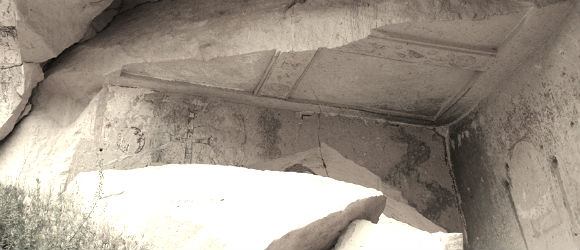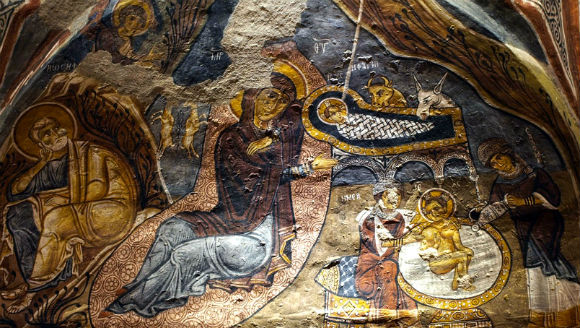Well worth tracking down is the Geyikli Kilise (Church with a Deer) which is past the village square and retains much of its monastic complex, including an impressive refectory table and benches cut clean out of the rock, as well as a faded 11th-century fresco of St Eustace and a deer.
Unfortunately, erosion continues to eat into the valley structures and parts may be closed because of the danger of collapse, while others require scrambling and ladders. If Valley Two is open, what’s left of the Geyikli Kilise ( Church with Deer ) is worth seeing.
The oldest paintings displaying the principal religious symbols of Christianity, like the Cross, the deer and the fish. On entering the first valley you will see a rock-cut mosque on the left, with a lovely minaret. You will then notice a monastery complex on the right resembling an upside down bowl cut of the rock. Immediately opposite, there is a rock-cut complex accessible by a metal ladder and connected to the second valley by a long, cave tunnel.
On leaving the first valley you can enter the second valley by following the path in front of the Mosque. Before leaving this open-air museum, be sure to pay special attention to the rocks at the entrance of the third valley. Here you will find a rock-cut mill with a grindstone which remained in use until the 50’s. Recently, its entrance has collapsed.
Geyikli Kilise (Deer Church),



Geyikli Kilise